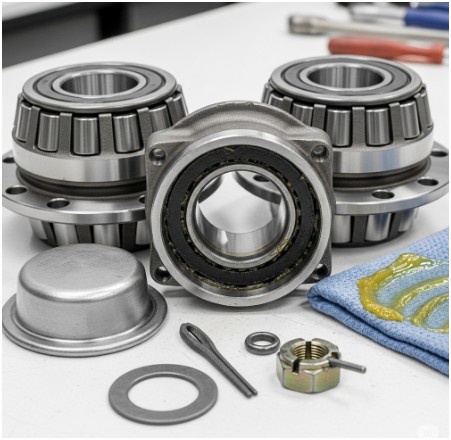I’ll admit, when I first hit the road full-time with my RV, I didn’t think much about the finer details of trailer maintenance. I was just excited to escape the city, breathe fresh air, and enjoy the freedom of life on the road.
But after a few rough miles and some noisy wheels, I quickly realized: trailer maintenance is a big deal. Among the many tasks that keep your trailer rolling smoothly, greasing the bearings is one of the most essential.
Here’s a friendly guide on how to grease trailer bearings to keep your wheels turning and your adventures rolling along.
What Are Trailer Bearings and Why Should You Care?
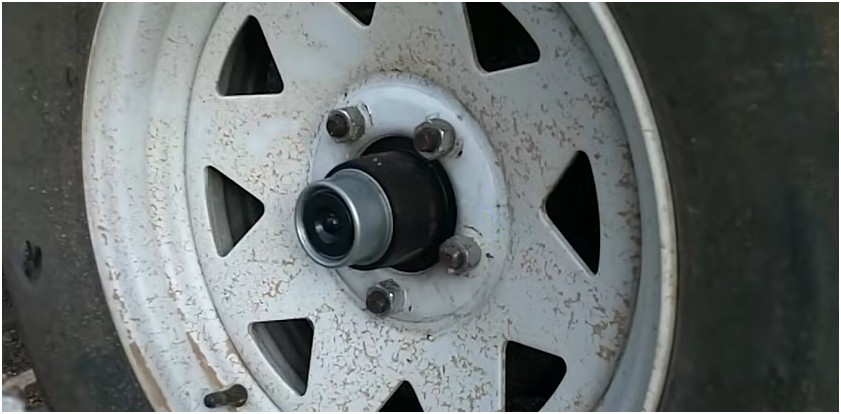
If you’re new to RV life, bearings might sound like a small detail, but they’re actually crucial for your trailer’s performance.
Bearings are small metal rollers inside your wheel hubs that help your trailer’s wheels rotate smoothly.
Over time, they wear out and lose their lubrication, which can cause friction, overheating, and, ultimately, failure. A wheel that seizes up while you’re on the road? Not an adventure anyone wants.
So, greasing your trailer bearings is key to keeping everything running smoothly—and it’s a relatively easy job that’ll save you from bigger headaches down the road.
Whether you’re a seasoned RV traveler or just starting out, here’s how to grease your trailer bearings the right way.
How Do You Know It’s Time to Grease Your Bearings?
Before we get into the step-by-step, you might be wondering when it’s actually time to grease your bearings. Here are a few telltale signs:
- Rough or squeaky wheels: If your trailer’s wheels are making noise when they spin, it could mean that the grease inside the bearings has worn out.
- Overheating: When bearings aren’t properly greased, they can overheat, leading to damage. If you notice the wheels feeling unusually hot, it’s time to check.
How to Grease Trailer Bearings: Step-By-Step
Alright, let’s roll up our sleeves and get into the nitty-gritty of how to grease trailer bearings. It’s easier than you think, and with the right tools and a little time, you’ll have everything done in no time.
Step 1. Gather Your Materials
Before you start, make sure you have everything you need:
- Jack and jack stands to lift the trailer safely
- Wheel chocks to keep the trailer from rolling
- Lug wrench or socket set to remove the wheel
- Flathead screwdriver to remove the dust cap
- Needle-nose pliers to remove the cotter pin
- Grease gun and marine-grade grease (I highly recommend lithium-based, especially for boat trailers)
- New grease seals (always replace them after servicing)
- Clean rags and brake cleaner for cleaning the bearing parts
Step 2. Prepare the Trailer for Maintenance
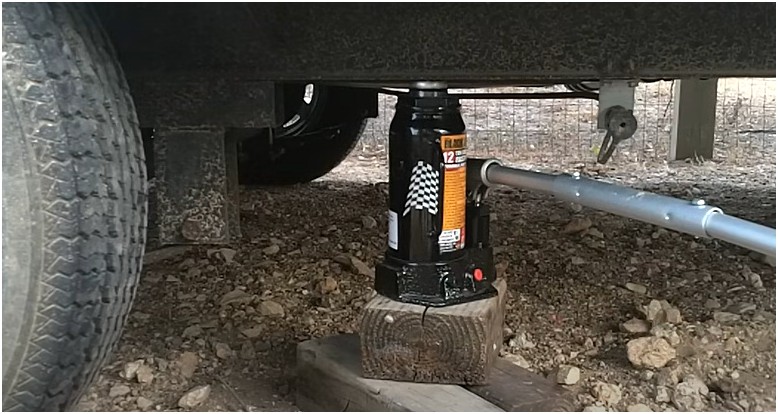
Image source- Jim Thomas
Start by parking your trailer on a level surface and applying the parking brake. Then, chock the wheels that you’re not working on to prevent any accidental rolling.
After that, use a jack to lift the trailer and support it with jack stands. It’s essential that the wheel can rotate freely once the trailer is lifted. Now, you can remove the wheel using a lug wrench or socket set.
Step 3. Disassemble the Hub
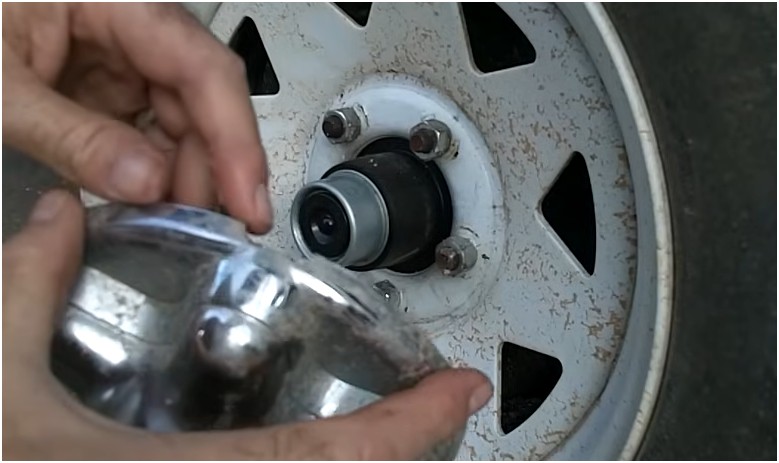
With the wheel off, it’s time to access the bearings. First, remove the dust cap using a flathead screwdriver. Gently pry it off without damaging the cap.
Next, remove the cotter pin with needle-nose pliers, then use your wrench to remove the castle nut (spindle nut). Be careful not to over-tighten it when reinstalling it later. After the nut is off, remove the outer bearing and hub assembly.
Step 4. Inspect and Clean the Bearings
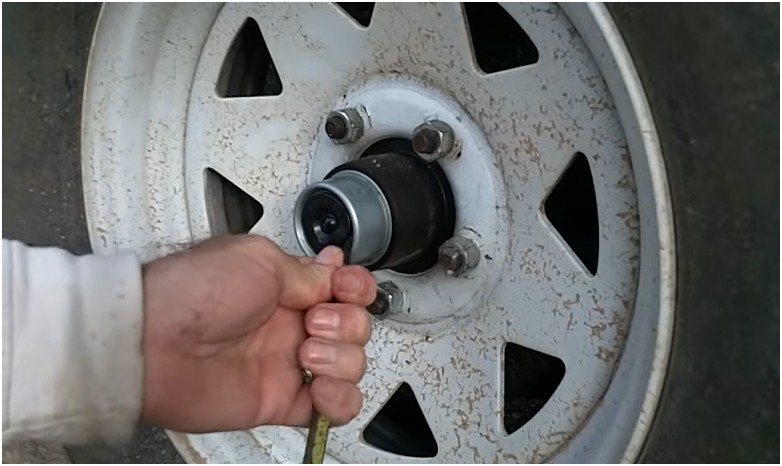
Now comes the fun part: cleaning! Using brake cleaner or solvent, thoroughly clean the bearings to remove all old grease and debris. Look for signs of damage like pitting, scoring, or rust.
If you notice any issues, it’s time to replace the bearings. Also, inspect the races (the parts inside the hub that the bearings sit in) for damage. Clean the spindle and hub with a rag to remove any leftover grease.
Step 5. Pack the Bearings with Grease
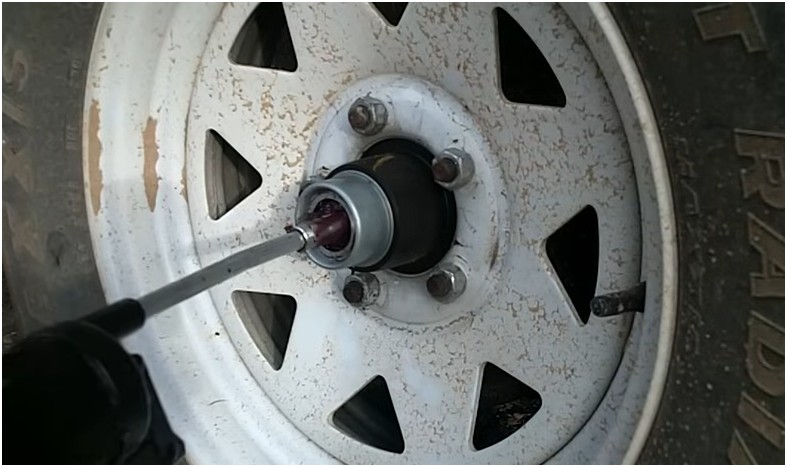
To grease the bearings, you have two options: hand packing or using a bearing packer tool.
- Hand packing: Take a good amount of grease and place it in the palm of your hand. Press the large end of the bearing into the grease and rotate it while applying pressure. This forces the grease into the bearing’s rollers. Repeat this process until the grease oozes out of the small end of the bearing.
- Bearing packer: If you have a bearing packer tool, place the bearing inside it and pump grease into the tool. This will flush out the old grease and fill the bearing with fresh grease.
Step 6. Reassemble the Hub
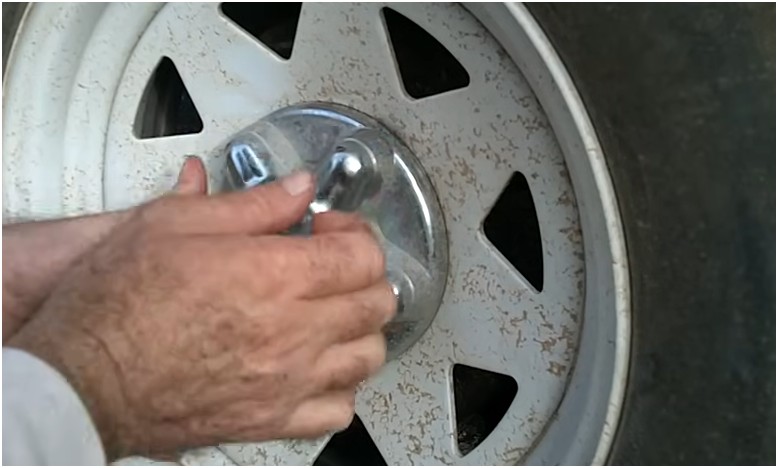
Once the bearings are packed, it’s time to reassemble everything. Start by installing a new grease seal into the hub. Make sure it’s seated properly. Then, apply a thin layer of grease inside the hub to keep everything running smoothly.
Next, install the inner bearing and carefully slide the hub assembly back onto the axle. Apply grease to the spindle before sliding the hub back on.
After the hub is back in place, reinstall the outer bearing, washer, and castle nut. Tighten the castle nut until it feels snug, but not overly tight.
The goal is to get the hub spinning freely with minimal play. Once the nut is tightened, insert a new cotter pin to secure it.
Step 7. Final Checks and Reinstallation
Now, spin the wheel by hand to make sure it moves freely without any resistance or weird noises.
Reattach the dust cap, ensuring it’s seated firmly. Finally, reinstall the wheel, and tighten the lug nuts to the manufacturer’s specified torque.
Lower the trailer carefully and remove the jack stands. Voila! Your trailer bearings are now greased and ready to go.
FAQs About Greasing Trailer Bearings
How often should I grease my trailer bearings?
Ideally, trailer bearings should be greased every 12 months or 12,000 miles. If you use your trailer frequently, especially in wet or salty environments, you may need to grease the bearings more often.
Can I grease my trailer bearings without removing the wheel?
If your trailer is equipped with a Bearing Buddy or similar system, you can grease the bearings without removing the wheel. Simply check the grease level by pressing the spring-loaded piston. If it doesn’t move, you’ll need to add more grease.
How can I tell if my trailer bearings need to be replaced?
If the bearings feel rough when you spin them by hand, or if they show signs of wear like rust or overheating (discoloration), they need to be replaced. Always inspect your bearings when performing maintenance to ensure they’re in good shape.
Wrapping It Up: Keep Rolling Smoothly
There you have it! Greasing trailer bearings might seem like a hassle, but trust me—it’s worth it. With this simple maintenance task, you’ll ensure your trailer runs smoothly and stays in top shape for all your adventures.
Plus, keeping your bearings greased is a small investment of time that saves you from big headaches down the road.
Now get out there, enjoy the ride, and remember: a little grease goes a long way!
